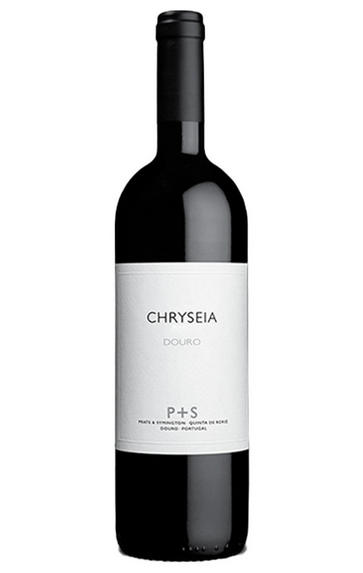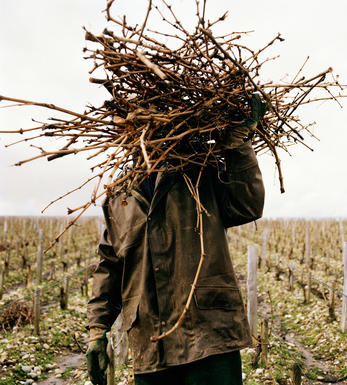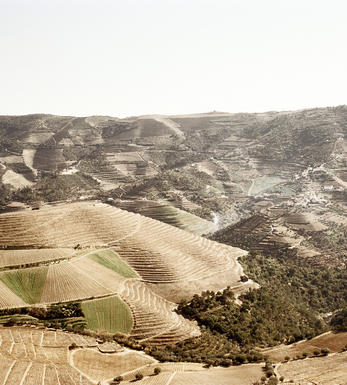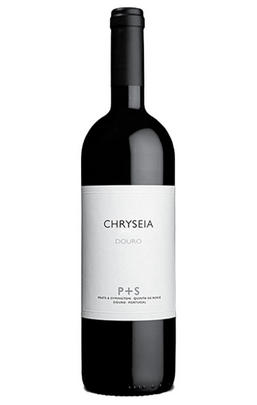
Critics reviews
From a small, dry, hot vintage, this needed a little time to show better. It is beginning to strut its stuff and starting to fulfill the promise I thought it had, but it is developing slowly. The oak has started to integrate much better. While it retains its intensity of flavor and is hardly for the shy, it has begun to show a bit more class and integration, not just flamboyance and sex appeal. Its underlying power is asserting itself a little as well. With the time in the bottle, it seems more tightly knit, still unevolved, tooth-staining and mouth coating.
Showing just hints of complexity now, it certainly will reward more time in the cellar and it has not really begun to reveal all that it has. It is a big, big Chryseia, but it showed well in Portugal this last summer and again when retasted in the USA very recently. At the moment, I would still give the nod to the more evolved and expressive 2007, but this certainly has the potential to be the best Chryseia ever. There were 2,850 cases made.
Mark Squires - eRobertParker.com #204 Dec 2012
About this WINE

Chryseia
Chryseia is the fruit of two of the "old world's" greatest wine making traditions, produced in the unique Douro Valley in Northern Portugal. In 1998, the Symington family joined forces with Bruno Prats, a leading Bordeaux winemaker and former owner of Cos D'Estournel, to produce a top class red wine in the Douro. Douro means "golden" in Portuguese, and its Greek translation is "Chryseia".
Chryseia is primarily made from Touriga Nacional, a low yielding variety of great complexity and finesse, and Touriga Francesa which is more tannic. Also used are Tinta Roriz, known as Tinto del País (Tempranillo) in Ribera del Duero, and Tinto Cão, a variety with a most attractive aroma. Each variety has been chosen from the vineyard where it grows best. The proportion of the varietals is deliberately not published as this is expected to vary from year to year.

Douro
The Douro region begins 100km inland from Porto and extends east to the Spanish border. With its winding river, sculptured terraced hillsides and wild, hilly vistas it is one of the most beautiful wine regions in the world.
Dominated by the region’s famous fortified Ports, the Douro’s still wines are gaining a rapidly improving reputation. Most top wines are labelled as Douro DOC (Denominação de Origem Controlada) although there are also some good wines using French grape varieties (not authorised under the DOC) that are labelled as Vinho Regional Terras Durienses.
With much of the areas overlapping, the Douro DOC covers almost 38,000ha, the Vinho Regional slightly more (45,500ha) and the DO for Port slightly less (32,000ha). The region’s soils benefit from a thick layer of schist on top of the typical granite that abounds in most of northern Portugal. The schist absorbs and radiates heat back into the vines, while allowing the limited amount of rain to seep far into the ground and the vine roots to delve deep into the vertical planes.
The wines are predominantly red and range from relatively light, lively and fruity to deep, dark, concentrated and fully-flavoured. The former tend to be made from Rabigato, Gouveio, Codega, Donzelinho, Malvasia Fina and Viosinho while the latter come from the better-known Port varieties: Tinta Roriz (aka Tempranillo), Touriga Nacional, Tinta Francesca, Tinto Cão, Bastardo, Mourisco Tinto, Tinta Amarela and Tinta Barroca. Classic French varieties like Cabernet Sauvignon, Sauvignon Blanc and Gewurztraminer are also planted and used to produce the Vinho Regional wines.
Recommended Producers: Quinta de la Rosa, Jorge Moreira, Altano



Buying options
Add to wishlist
Description
The 2009 “Chryseia” is 70% Touriga Nacional and 30% Touriga Franca, aged for 13 months in new oak. The Symingtons' recent acquisition, the historic Quinta de Roriz estate, for the first time is in play here, making up nearly 40% of the blend (mainly with its Touriga Nacional, I’m told). The rest is from Perdiz and Vila Velha (the latter privately owned by a Symington and bordering Roriz).
From a small, dry, hot vintage, this needed a little time to show better. It is beginning to strut its stuff and starting to fulfill the promise I thought it had, but it is developing slowly. The oak has started to integrate much better. While it retains its intensity of flavor and is hardly for the shy, it has begun to show a bit more class and integration, not just flamboyance and sex appeal. Its underlying power is asserting itself a little as well. With the time in the bottle, it seems more tightly knit, still unevolved, tooth-staining and mouth coating.
Showing just hints of complexity now, it certainly will reward more time in the cellar and it has not really begun to reveal all that it has. It is a big, big Chryseia, but it showed well in Portugal this last summer and again when retasted in the USA very recently. At the moment, I would still give the nod to the more evolved and expressive 2007, but this certainly has the potential to be the best Chryseia ever. There were 2,850 cases made.
Mark Squires - eRobertParker.com #204 Dec 2012
wine at a glance
Delivery and quality guarantee